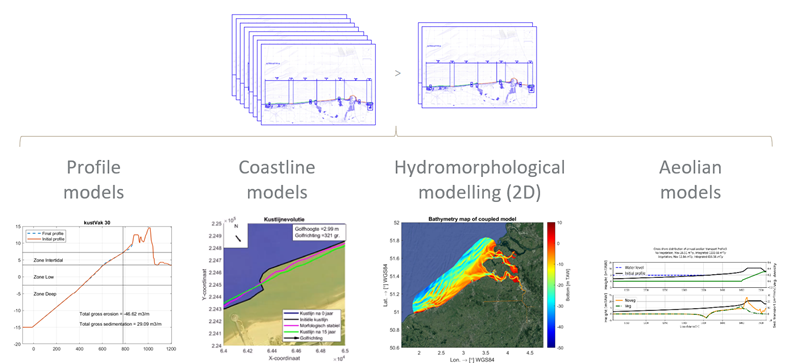B. Verheyen1*, A. Bolle1, T. Vanagt2, K. Casteleyn3, H. Laurens4, E. Van Keer5, E. Van Quickelborne6
1 International Marine and Dredging consultant (IMDC), Antwerp, Belgium; 2 ORG, Brussels, Belgium; 3 Arcadis, Belgium; 4 Departement Mobiliteit & Openbare werken. Maritieme Toegang; 5 Departement Mobiliteit & Openbare werken. Beleid; 6 Agentschap Maritieme Dienstverlening en Kust. Afdeling Kust.
*corresponding author:
Introduction
In order to keep protecting the entire coast against storms and flooding as a consequence of higher sea levels, it is key to identify appropriate long term adaptive coastal protection strategies. Determining the most appropriate strategy is however a challenging task due to the uncertainties related to the long term aspect and the balance needed between the level of detail required to assess the strategies and the strategic level of the studies. On December 22, 2017, the Flemish government decided to develop such a long-term 'Coastal Vision' (Vlaamse Regering, 2017) to define the space needed for the socially most desirable measures that are necessary to gradually protect our coast and the hinterland against a sea level rise of up to 3 meters in the long term. The assessment approach, focussing on the model tools as used to design solutions and to assess the hydromorphological aspects of the project, are discussed.
Approach
In this study, a wide range of solutions with corresponding space claims were investigated through a participatory approach. An assessment framework based on a framework of ambitions was applied to investigate with increasing detail throughout the project the different solutions. As part of the assessment framework several criteria have been evaluated related to hydromorphological aspects for which a wide range of tools have been applied at different moments during the process of designing, assessing, optimising and selecting alternative strategies (illustrated by Figure 1). As each tool has its own strengths and limitations it was important to determine how this tool can contribute in the process and how the results can be integrated in an overall assessment.

Figure 1: Selection of the model toolbox as used to assess, optimise and select different strategies.
Conclusion
Coastal Vision focused on adaptive coastal protection strategies in the long term for the Belgian coast, against higher and accelerated sea level rise. An approach is presented how to assess and select high-potential alternative strategies illustrated by the hydromorphological research approach and toolset.
Acknowledgement
The study team wishes to acknowledge the Flemish government and the department of public works by making these long term strategic studies possible, allowing in view of the changing environment the basis for good stewardship of our surroundings.
References
Vlaamse Regering 2017. Nota aan de Vlaamse Regering. Startbeslissing Complex Project Kustvisie. VR 2017 2212 DOC.1384/1."
I. Surname1*, F.N. Another-Surname2 , Y. Next-Surname2
1 University Name, Country; 2 Organization Name, Country
* Corresponding author: mail.name@organization.org


